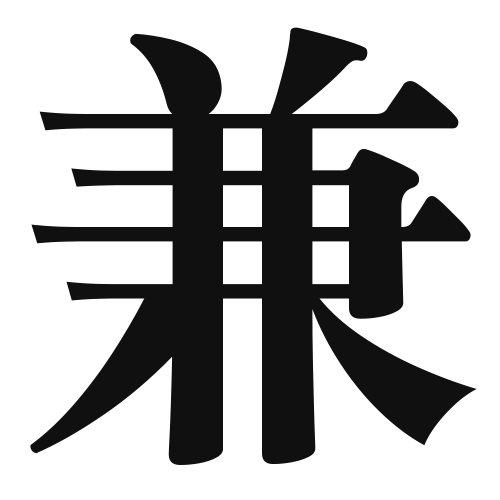1. Overview of Meaning
The kanji “兼” (pronounced “ken” or “kan”) means “to combine” or “to hold concurrently.” It often refers to the idea of having multiple roles or responsibilities at the same time.
2. Formation and Radical
Formation of the Kanji: The kanji “兼” is a compound character (会意文字) that combines elements to convey its meaning. It consists of the radical for “sword” (刀) and the character for “to join” (合), symbolizing the act of joining or combining.
Radical: The radical of “兼” is 刀 (katana), which relates to cutting or dividing, reflecting the idea of combining different elements.
3. Examples of Usage
Common Words and Phrases: Some frequently used words that include “兼” are:
- 兼業 (けんぎょう, kengyō) – dual occupation
- 兼任 (けんにん, kennin) – concurrent position
Example Sentences in Daily Conversation:
- 彼は会社員と兼業で農業をしています。
(He works as a company employee and also farms on the side.) - 彼女は学校の教師を兼任しています。
(She holds a concurrent position as a school teacher.)
4. Synonyms and Antonyms
Similar Kanji: A similar kanji is “合” (ごう, gō), which means “to join” or “to fit.” While both kanji involve the concept of combining, “兼” emphasizes the aspect of holding multiple roles.
Opposite Kanji: An antonym is “分” (ぶん, bun), which means “to divide” or “to separate,” highlighting the contrast between combining and separating.
5. Cultural and Historical Background
Relation to Japanese Culture: The concept of “兼” is significant in Japanese culture, where individuals often take on multiple roles, such as working in different jobs or balancing family and career responsibilities.
Proverbs and Idioms: One relevant proverb is “一石二鳥” (いっせきにちょう, isseki nichō), which means “killing two birds with one stone,” reflecting the idea of achieving multiple goals simultaneously, similar to the meaning of “兼.”
